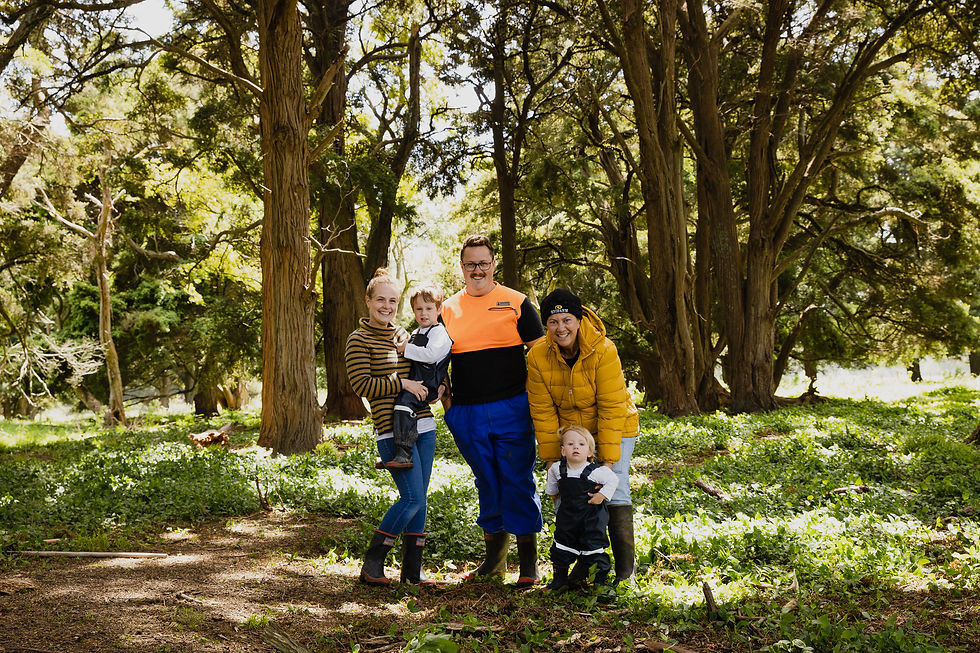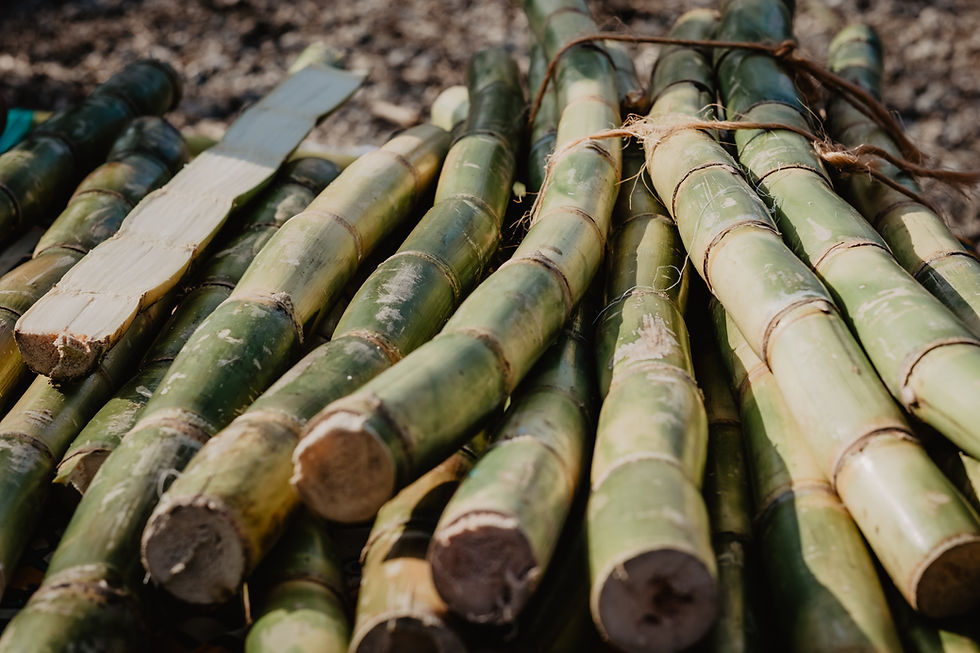From the soil up: dairy farming with heritage at its core
- Cathy Tait-Jamieson
- Feb 15, 2021
- 4 min read
Māori dairy farmer Cathy Tait-Jamieson tells us how her family farm developed and grew by keeping ancestral farming practices central. She believes that farming health begins with the soil, which is a holistic approach including building in generational input and knowledge.

In the early 1980s when dairy farmers in New Zealand were excited by the new trend of applying urea [a compound used as fertilizer] from bags to encourage artificial growth of grasses, and later when the bi-product from palm oil extraction (PKE) was available for farmers to feed cows as a supplement, it was a lonely life for a family who chose to continue to farm in a traditional way - where clover naturally fixed nitrogen and stock numbers were kept so that the farm could remain self-sufficient for feed. The only real examples of the success of how we were farming came from European and American family farms who practised Rudolf Steiners BioDynamic farming, and by our ancestors who also used knowledge of the planets and stars to identify the seasons and for making management decisions, such as when to harvest and when to sow.
When the time came for us to purchase exiting shareholders from the family farm, we needed to add value to the produce coming from the land. The main product was milk from our herd of cows. We converted an old farm dairy into a processing hall, added a hot water generator and milk pasteuriser, several vats, a coolstore and came up with a brand and a logo. BioFarm yoghurt was born. As liquid milk was a regulated market in 1987, we were forced to make yoghurt. Using live cultures obtained from a local starter laboratory we thought it should be easy enough to make, as we always had a brew of yoghurt in a jar in the hot water cupboard on the go for our breakfasts. However, making 2,000 litres at one time proved somewhat of a challenge. Each bacteria added gives a different aspect to the final product, and each grows at a different temperature. The challenge is to have the temperature right for the thick smooth feel on the tongue but also to get the growth of the good probiotic cultures, which are more acid tasting, and liquid forming.
Without thickening agents such as milk powder or starch, our yoghurt was naturally pouring, so after trying tubs, we moved pretty quickly to a bottle. This differentiated us in the market as something different, alongside our certified organic status, and also the addition of L. acidophilus bacteria. Today, acidophilus is a standard in all yoghurts, but back when we started, it was new and was the largest growth segment in the yoghurt category.
These points of difference kept us on supermarket shelves and after 34 years of being in the face of New Zealand consumers, it is widely believed that we are a big company. It belies belief that a single family can maintain a market presence every day of every year, using milk from its own herd of 100 cows.
Over these 34 years, the product the consumer buys and loves has not changed at all, but the farm has changed quite considerably. The 500 plus trees we have planted over this time are now very large, making the farm unique from the usual tree-less landscape of most dairy farms. We have also introduced sheep, goats, pigs and beef animals to the agriculture system. This diversity enables weeds to be managed, waste product to be utilised, animal health to be enhanced as well as a diverse income stream for the farm.
All animals on the farm are born here, except for the occasional male of all the species, to bring in new genetics.
If you do the maths, you’ll note that the original family of husband, wife with 4 children are somewhat older than when this journey started. To feed our young family we also grew lettuce, brassica, potatoes and sweet corn and sourced organic grain and had bread contract manufactured. We were self-sufficient in the home as well. We made the decision that we would grow a surplus to our requirements, so all the products were sold as coming from BioFarm. This enabled our brand to gather awareness as it was on many different products that consumers could buy. As our children grew older and moved from the vegetable patch off to university, other suppliers of bread and vegetables came on stream, so we focussed our energy on the culturing of milk.
We are now in the era of succession. After studying and working all over the world, all 4 of our children have come home, to their place of birth and original learning. We have 8 mokopuna [grandchildren] visiting, playing and doing small jobs on the farm. Each of our children spent their first 12 years with us on the farm, being educated in the old schoolhouse on the farm. They were steeped in the growth of our farm and its extension out into the wider community, so it is innate knowledge for them. Anyone of them can step in to any role at any time.
I was recently asked, “are you able to hand over now to the younger generation?” I was so glad to have the question, as I thought that I was worried about this not being the case. In answering it, I realised that it is not about handing anything over, it is about the younger generation having room to come in to the spaces the older ones create by not being able to participate as fully any longer. There are still vital roles for the elderly and the young alike. It’s the most defining question I have ever been asked.

Photo of myself, son Eruera, his wife Evie and their two boys Daniel and Arthur.
Read Cathy Tait-Jamieson's The Ten answers.










